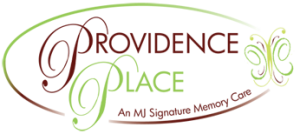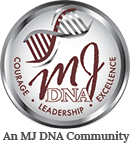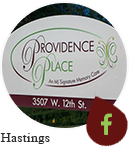Can You Paint, Dance or Sing Your Way to Healthier Aging?
Many people believe that creativity peaks when we are young, diminishing as we grow older. But this stereotype is a myth. In fact, research shows that creativity can be maintained and even increased as we age. Many lifelong artists have reached their most productive and innovative phase in their 60s and beyond.
The arts are entertaining and culturally important. But is creativity important for health? It seems that it is! Study after study shows that lifelong participation in graphic arts, music, dance, creative writing and other art forms all set the stage for better health in our later years. For example, researchers recently found that people who played an instrument when they were young enjoy a brain health advantage in their senior years.
But what if you didn’t spend much time on artistic pursuits when you were a child? What if you were too busy during your working years to pick up a paintbrush or join a musical combo? The good news is, it’s never too late to tap into the power of art! Just as we can begin an exercise program after age 65 even if we’ve always been couch potatoes, we can also put on an artist’s smock or take up an instrument at any age, no matter what our health status and abilities. The benefits of art are many—physical, emotional, intellectual, psychosocial and intergenerational. According a study authored by the late Dr. Gene Cohen, who was a pioneer in the study of aging and creativity, seniors who participated in an arts program reported a higher overall rating of physical health, fewer doctor visits, less medication use, a reduction in falls, and fewer other health problems. The National Academy of Sciences is currently doing more research on “the relationship of art-making and creativity to physical health and psychological well-being of older adults.”
This should not surprise us when we realize that expressing ourselves is a vital human need. Sharing our history, our view of the world, our hopes and dreams and fears … though words, through music, through images, through motion … promotes the sense of well-being that is a major measure of successful aging. Consider this small sampling of recent studies on the benefits to be found in these types of creative pursuits:
Music. A University of California San Francisco neuroscientist is using community senior choirs to help participants improve balance and strength, and reduce depressive symptoms, loneliness and memory loss. Music therapists from MetroHealth Medical Center in Cleveland use music to help hospital patients reduce pain and build strength. And intriguing research from Northwestern University suggests that musical training might help reduce age-related hearing loss.
Drama. Professors Helga and Tony Noice of Elmhurst College in Illinois are using acting and drama to provide increased brain stimulation for older adults. They have found that acting engages performers on many levels—physical, emotional and intellectual.
Dance. University of Montreal professor Dr. Chantal Dumoulin used a dance program to help women reduce incontinence. Dance has also been used in an effective fall prevention program, according to University of Missouri’s Jean Krampe. And the Parkinson Foundation offers dance programs to reduce movement challenges.
Creative writing. The TimeSlips program encourages the use of imaginative language to improve the quality of life of people who are living with Alzheimer’s disease and related disorders.
Visual arts. Learning a new hands-on skill can protect the brain. University of Texas at Dallas researchers listed digital photography and quilting as examples of activities seniors might choose to improve cognitive function. And art museums across the country offer special programs for people with memory loss. According to Dr. Luis Fornazzari of St. Michael’s Hospital Memory Clinic in Toronto, artistic abilities may be retained in the mind even when other abilities are lost. He described the work of an internationally known sculptor who was able to create works of art even though she was unable to draw the correct time on a clock or remember the names of things. “Art opens the mind,” says Fornazzari.
Opportunities to Explore Your Creative Side
DIY—do-it-yourself—isn’t only for young people. You can create your own an art program, if that is what you prefer. Explore a local art store and bring home a selection of paints and paper. Dust off your piano and try some new music, or buy a simple instrument. Write a memoir. Put on some music and dance.
But this is just a start. Art opportunities abound in the community, and creating art with others adds the benefits of socialization. Check out classes offered by your local senior center, senior services department, parks and recreation, community colleges and university extension programs. Art galleries and other cultural institutions often offer participation programs.
Take an old favorite to a new level. Do you sew from patterns? Create your own designs! Do you do needlepoint from a kit? Try painting your own canvas. Use your woodworking tools to make decorative items for holiday gifts. “Yarn bomb” a tree in your yard—and be prepared to explain your project to curious passersby. Or increase the benefits of gardening by taking a flower arranging class.
What art activities are best for you? Don’t be afraid to try something new! Neurologists tell us that novelty is good for the brain. Try a creative activity you’ve never tried before—maybe even something you don’t know much about. If you never took up a musical instrument, discover the joys of creating sound. If you’ve never participated in group singing, your local choir may offer eye-opening pleasures. Never stepped on a stage? In a drama group, you may discover that you love to ham it up.
Many adapted activities are available for people with physical or cognitive limitations. More than ever before, creative arts therapists offer technologies old and new to enable people with mobility, sensory or cognitive challenges participate in arts of every type. Your local senior center may offer ideas; check with organizations and foundations that serve people with your own particular health challenge to find innovative adaptive art ideas and to learn about local programs.
Copyright © IlluminAge AgeWise, 2014


